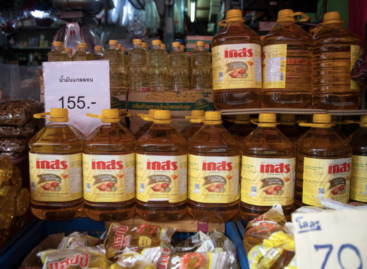The price of agricultural land rose by almost 10 percent last year
The amounts to be paid for agricultural land in Hungary continued to rise in 2022, and the price increase accelerated to more than nine percent after 8.5 percent in 2021 and 6.6 percent in 2020. However, in real terms, prices fell by 4.5 percent due to high inflation. Despite this, however, there were areas and branches of cultivation that were characterized by expansion in a real sense, for example, fields in Northern Hungary. The highest average price of over two million forints per hectare had to be paid for orchards and vineyards, according to MBH Jelzálogbank’s analysis.

The value of the MBH Arable Land Index nominally increased to 293.7 points last year from the level of 268.5 in 2021. The indicator, deflated with the consumer price index, decreased due to high inflation, decreasing to 177.6 from the level of 185.9 the year before last.

MBH Agricultural Land Index – nominally and deflated with the consumer price index (Source: MBH Agricultural Land Index)
The specific price of arable land increased by 7.4 percent compared to 2021, the growth rate exceeded the 6-7 percent measured between 2019 and 2021. However, due to inflation above 10 percent, overall real prices decreased. In 2022, an average of HUF 1.94 million had to be paid for one hectare of arable land, while in 2021 the specific average price was still HUF 1.81 million. Prices increased in all regions of the country, with the highest increase of approximately 18 percent in Northern Hungary. The average price of over two million forints per hectare of arable land was the highest in Southern Transdanubia, Central Hungary, the Northern Great Plain and the Southern Great Plain. Among the counties, the arable land prices were the highest in Hajdú-Bihar, Tolna and Békés, both hovering around HUF 2.5 million. Among the districts, Hajdúszoboszlói and Hajdúböszörmény continued to be in the lead with an average price of over three million forints per hectare.
Among the various branches of cultivation, forests and wooded areas were characterized by the highest price increase of 11.1 percent per hectare. Lawns, meadows and pastures were in second place with a 10.6 percent price increase. In the case of orchards, the amounts paid per hectare increased by 9.2 percent compared to 2021, the average specific price of grapes increased by 8.4 percent, and the aforementioned 7.4 percent increase was observed in arable fields, which also means that prices have decreased in real terms.
Among the branches of cultivation, the most had to be paid for a hectare of orchards, an average of 2.21 million forints, while the second most expensive were vineyards with 2.05 million forints. The average prices of forests and wooded areas as well as lawns, meadows and pastures were almost the same, for the former 1.24 million forints and for the latter 1.28 million forints per hectare.
“The price of domestic agricultural land has shown a significant and sustained increase in recent years, and as long as sustainable production is carried out on them, they have value. This year, we expect a significant increase in traffic thanks to the newly launched state land sales program, because buying agricultural land is often a once-in-a-lifetime opportunity. As the leading credit institution in agriculture, our aim is to take our share of the financing needs associated with land auctions at least in proportion to our market weight, thereby helping our customers,” said József Sánta, Network Director of MBH Bank’s Agricultural and Food Business, emphasizing that it is an important program, which is also reflected in the expected significant financing demand. As part of the land sale program, between June 22 and July 14, the state auctioned 12,000 hectares of land worth tens of billions of HUF. As a continuation of the program, another 10,000 hectares will be auctioned later.
Related news
Corporate leaders’ commitment to sustainability at record level
According to the latest data from the K&H Sustainability Index,…
Read more >Aldi Ireland Announces €5m Investment In Green Energy Solutions
Aldi Ireland has announced a €5 million investment in green,…
Read more >At the forefront of the domestic food industry for more than half a century
The future of the food industry is shaped by young…
Read more >Related news
Corporate leaders’ commitment to sustainability at record level
According to the latest data from the K&H Sustainability Index,…
Read more >FAO food price index rose slightly in June due to higher prices of meat, dairy products and vegetable oils
The Food and Agriculture Organization of the United Nations (FAO)…
Read more >What can cause the price of a wine to increase tenfold?
There are fewer of them worldwide than the number of…
Read more >





